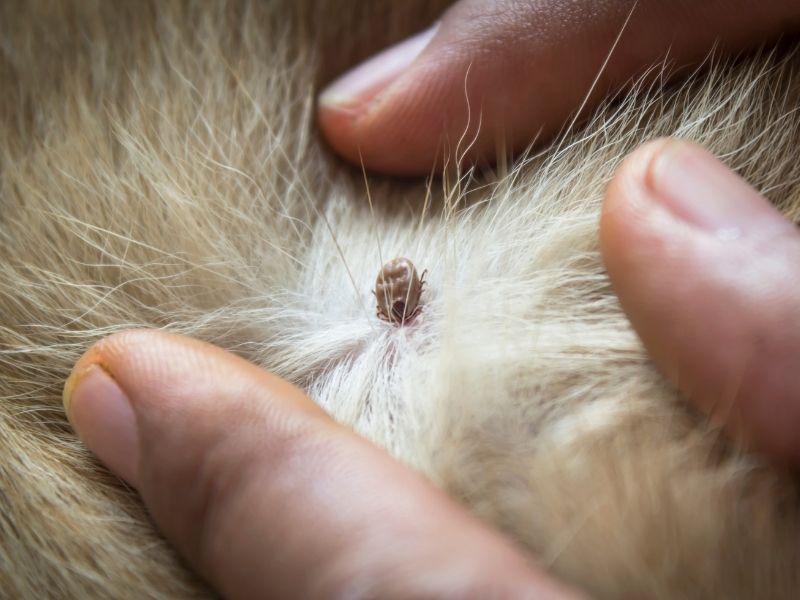For most pet owners like you, preventing nasty pests from infecting your pet and your home is a big headache. Of all pests, ticks prove to be the most troublesome, and life-threatening.
Ticks are parasitic arachnids that feed on the blood of their host to complete their life cycle. Infected ticks carry harmful pathogens like Lyme diseases, which they release into the bloodstream of their host while feeding. If not quickly attended to, this could result in the death of the pet.
If you spot a tick on your pet, chances are it has either caused its intended damage or opened up your pet to other infections. While there are so many treatments out there to cure ticks, taking precautions to avoid an infestation is often the best option. So, if you are ready to prevent ticks on your pet, here are 4 ways to do so.
4 Ways to Prevent Ticks on Your Pet
- Take care of your yard: If you have a home with a yard, your first priority should be taking care of your yard. Trim overgrown grass, rake up dead leaves, and dispose of dirt to discourage ticks from finding breeding spots in your yard. Don’t let your dog roam in high grass during tick season. Also, ensure you keep stray animals away from your yard by putting away attractions like food and covering up all loose ends of your fence. This prevents the strays from infesting your yard with the ticks living on their skin.
- Check your pet regularly: Ticks spend days on the body of their host, feasting, growing, and reproducing. After you take your pet out for a walk, it is important that you check the body of your pet for any attached ticks before it causes any serious damage to the health of your pet. Ticks are often very small and difficult to see, so, you have to be thorough while checking. Routine check-ups to the vet can also help to prevent infestation on your pet.
- Use the right treatment: The right treatment can go a long way in preventing and repelling ticks from living on your pet. Some treatments could be administered orally into the bloodstream or applied directly to the skin of your pet. Whichever one you choose, ensure the product is not past the expiry date. Before you introduce any treatment, you must be sure to first speak to your vet on the effectiveness of the product and the safety of your pet.
- Stay Updated: Take note of the tick season, areas of high infestation, and prepare your pet for the worst. Ticks can come into your home on the body of your pet, or even, attached to your own clothing. Having an extensive understanding of ticks and their life cycle would help you know where to look and how to remove ticks if you come in contact with them.
As much as possible, avoid chemicals on the skin of your pet. Cats, as well as dogs, often have allergic reactions to chemicals like insecticides used to control ticks.
More info on Arizona Pests
- 4 Signs You Have Bed Bugs
- How to Get Rid of Cockroaches
- How to Get Rid of Rats
- How Do I Know if I Have a Scorpion Infestation?
- How Do I Know if I Have a Bee or Wasp Nest in My House?
- How Do You Know if You Have Mice or Rats?
- Do I Need a Professional to Remove Tarantulas?
- 5 Ways to Keep Pests out of the Office
- How Ants Ruin your Home
- How to Get Rid of Apple Maggots

Recent Comments